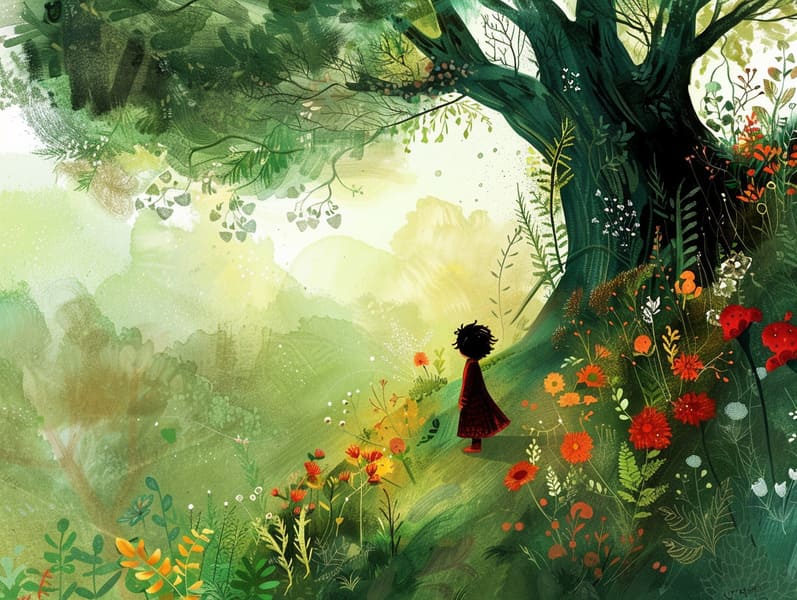The Emergence of Famous Fairy Tales and Their Unwavering Grace.
The Emergence of Famous Fairy Tales and Their Unwavering Grace.
Blog Article

Vintage fairy tales have old origins. These tales have been shared from one generation to the next well before they were ever inscribed. They originated from a variety of cultures, including African traditions. They were initially passed along among older generations, often carrying themes and messages relevant to the societal norms and beliefs of the time.
The renowned Brothers Grimm, Jacob and Wilhelm, were among the first to collect many of these beloved tales. Their volume, "Grimm's Folk Tales," included narratives like "Ashenputtel," "Little Brother and Little Sister," and "Little Snow White," which have since become pillars in the world of iconic fairy tales. Similarly, Hans Christian Andersen's imaginative stories, such as "The Little Mermaid," and "The Duckling that Could," have enchanted hearts worldwide, ensuring their place in the pantheon of beloved fairy tales.
Despite being ancient, these stories remain as pertinent as ever, especially as kids' bedtime tales. These whimsical stories are now available in multiple formats, including vividly illustrated books, captivating animations, and online fairy tales.
Their lasting presence can be connected to several fascinating points:
Ethical Lessons: Traditional fairy tales often provide important moral lessons. Tales like "The Story of the Boy Who Cried Wolf" teach the benefit of honesty, while "The Race of the Tortoise and the Hare" underline the qualities of steadfastness and unpretentiousness. These stories offer young readers clear distinctions between good and bad, shaping their moral compass in a mild yet profound way.
Compassion and Knowledge: Fairy tales frequently illustrate personalities facing problems and hurdles, fostering children to identify with their struggles and root for their triumphs. For instance, "Beauty's Beast" emphasizes the merit of seeing beyond looks to comprehend the real character of a being, fostering tenderness and recognition.
Cultural Insights: Many traditional fairy tales are rooted in the cultural contexts from which they came. Engaging with these stories can provide captivating looks into different societies, developing a sense of world appreciation and acknowledgment.
Inventiveness and Imagination: The imaginative elements in classic fairy tales—magical beings—motivate children’s dreaming abilities. These tales bring readers to otherworldly realms, provoking imaginative thinking and a sense of astonishment that continues a lifetime.
Old fairy tales are not only fantastical but also edifying. They function as fascinating tools in advancing various intellectual and emotional capacities in young ones. When old fairy tales are voiced, they strengthen verbal development by presenting new lexicon and sophisticated sentence structures. This practice also strengthens listening abilities and attentiveness, as children stay focused, enthusiastic to see what happens next.
Furthermore, discussing the themes and characters of traditional fairy tales can cultivate intellectual skills and thought processes. Young ones learn to identify patterns, guess what will happen, and get cause and effect. These contemplations also aid young readers voice their thoughts and feelings, adding to their emotional intelligence.
In today’s technological age, the existence of digital fairy tales has made these fairy tales more acquirable than ever. Online platforms and mobile apps present wide arrays of traditional fairy tales that can be viewed or listened through anytime, anywhere. Fairy tales recited are particularly sought after, presenting an interactive method for little ones to immerse in these spellbinding stories. Narrated books and narrated videos move characters and settings to life, often accompanied by whimsical melodies and musical scores click here that augment the tale-telling adventure.
The lasting allure of old fairy tales lies in their ability to modify to today's society while holding onto their main lessons. Contemporary adaptations of these tales often spotlight more different figures and modern settings, making them understandable to today’s audience. However, the key lessons of valour, goodness, and fair-mindedness remain unchanged, continuing to affect readers of all ages.
Timeless fairy tales also offer a sense of calm and comprehensibility. They showcase a structured narrative with a straightforward beginning, middle, and end, often wrapping up with the wrap-up of conflicts and the triumph of virtue over vice. This foreseeability can be soothing for young readers, spreading a sense of steadfastness in an unstable world.
Classic fairy tales continue to entrance and train new generations, maintaining their radiance and value in modern society. As children's night stories, they impart a perfect blend of fascination and comprehension, furthering moral values, empathy, and creativity. The presence of online fairy tales and the widespread nature of fairy tales read aloud make sure that these ancient stories remain available to new generations.
By continuing and broadcasting these narratives, we continue to glorify the rich tapestry of legends and cultural heritage. Whether you are reading a gorgeously illustrated book, browsing a electronic collection, or listening on an audiobook, the loveliness of classic fairy tales is always within reach. These tales illustrate of the timeless influence of stories and its ability to bond us across time and space.
Whether you are experiencing a richly illustrated book, viewing a electronic collection, or listening via an read-aloud story, the captivation of bedtime fairy tales is always within reach.
These narratives teach us of the endless spell of stories and its ability to unify us across centuries and lands, creating a bond that captivates and teaches alike.